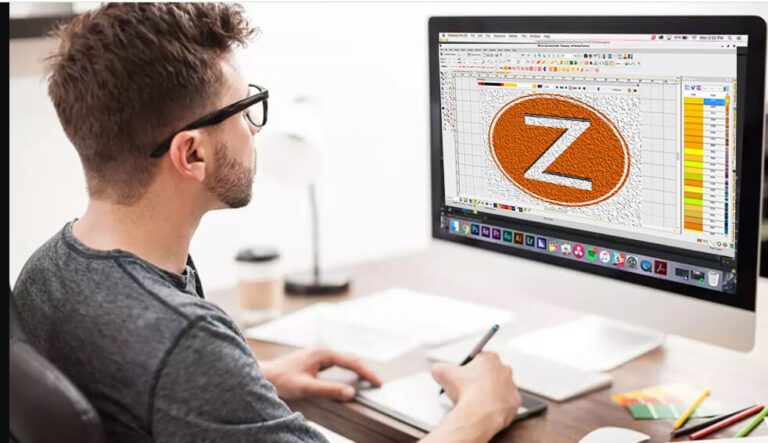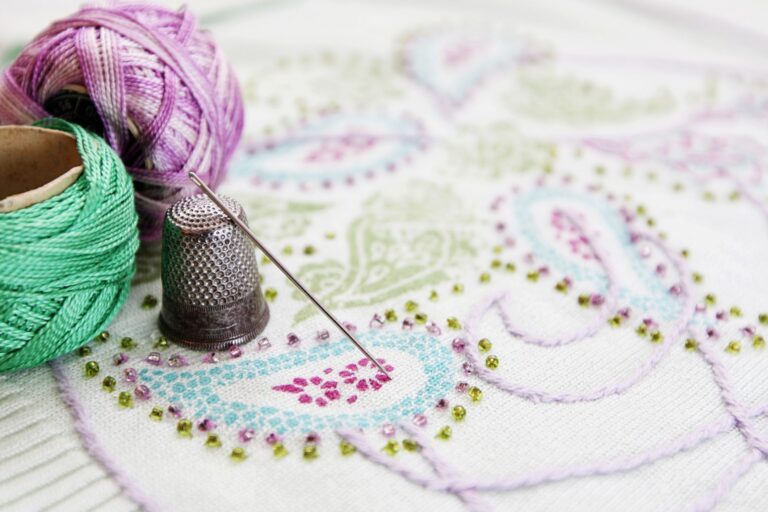The Unsung Hero of Embroidery: A Deep Dive into Bobbins
Embroidery machines are marvels of precision and creativity, transforming thread into stunning designs. But behind the dazzling needlework lies a silent partner, a workhorse that ensures smooth stitching – the bobbin. Often overlooked, the bobbin plays a crucial role in creating beautiful embroidery. This comprehensive guide delves into the world of embroidery machine bobbins, exploring their types, uses, and how to get the most out of them.
Bobbin Basics: Size Does Matter
Embroidery machine bobbins come in various sizes, designated by letters or numbers. The most common are:
- Class 15 (A Style): This is the standard size for most home embroidery machines.
- Style L: Often found in commercial embroidery machines, these offer a larger capacity for longer stitching times.
- Style M: Another commercial bobbin size, slightly smaller than Style L.
Choosing the Right Bobbin: Always refer to your embroidery machine’s manual for the recommended bobbin size. Using an incorrect size can cause tension issues, thread breakage, and uneven stitching. Some machines may even have sensors that detect the bobbin size and prevent use with incompatible ones.
Bobbin Materials: Plastic vs. Metal
Plastic Bobbins:
- Pros: Lightweight, inexpensive, readily available pre-wound.
- Cons: Not as durable as metal, can melt at high sewing speeds, some may not wind thread evenly.
Metal Bobbins:
- Pros: Durable, withstand high sewing speeds, provide smoother thread tension.
- Cons: Heavier than plastic, can be more expensive.
The ideal choice depends on your embroidery needs. Plastic is convenient for small projects, while metal may be preferable for heavy-duty embroidery or high-speed machines.
Pre-wound vs. Self-wound Bobbins
Pre-wound Bobbins:
- Pros: Convenient, time-saving, available in various thread colors.
- Cons: Often more expensive than winding your own, limited thread variety.
Self-wound Bobbins:
- Pros: Cost-effective, allows for using any thread color or type, greater control over thread tension.
- Cons: Takes time and practice to wind evenly, requires compatible bobbin winder.
For beginners, pre-wound bobbins offer a convenient way to get started. Experienced embroiderers may prefer the flexibility and cost-savings of self-winding.
Thread Selection: The Perfect Match for Your Bobbin
While the top thread in embroidery gets most of the attention, the bobbin thread plays a vital role. It’s crucial to choose the right type for optimal results:
- Match Thread Weight: Use thread with a similar weight to the top thread. A lighter weight bobbin thread can cause puckering, while a heavier weight can create tension issues.
- Consider Thread Type: Use rayon or polyester thread for bobbins, as they offer smooth feeding and minimal lint. Cotton thread, commonly used for top threads, can cause friction in the bobbin case.
- Color Coordination: For opaque fabrics, use a bobbin thread that matches the top thread color for a seamless look. For sheer fabrics, use a clear or neutral bobbin thread.
Bobbin Winding Tips: Winding for Success
Choosing to self-wind bobbins requires mastering the technique. Here are some tips to ensure even and tension-controlled bobbins:
- Use a Compatible Bobbin Winder: Most sewing machine dealers offer bobbin winders specifically designed for your machine model.
- Thread Tension: Set the tension on the bobbin winder slightly looser than the top thread tension. This allows the bobbin thread to unwind smoothly during stitching.
- Winding Technique: Maintain a steady hold on the thread spool as the bobbin winds. Avoid overfilling the bobbin, as this can cause tension issues.
Bonus Tip: For added security, place a small piece of thread leader tape at the beginning of the wound thread. This prevents the thread from unraveling when the bobbin is inserted into the machine.
Bobbin Care: Keeping Your Workhorse in Top Shape
Proper bobbin care ensures smooth operation and prevents stitching problems. Here’s how to maintain your bobbins:
- Store Properly: Keep bobbins in a cool, dry place away from direct sunlight. Dust and dirt can affect thread flow.
- Clean Regularly: Wipe down metal bobbins with a soft cloth to remove any dirt or lubricant residue.
- Inspect for Damage: Check for nicks, cracks, or warping on your bobbins before each use. Discard any damaged bobbins to avoid thread breakage and tension issues.
By following these simple tips, you can extend the life of your bobbins and ensure flawless embroidery results.
Troubleshooting Common Bobbin Problems: Stitching Success One Fix at a Time
Even with the best care, bobbin issues can arise during embroidery. Here’s a breakdown of common problems and solutions to get your machine stitching smoothly again:
Problem 1: Uneven or Looped Stitches
- Cause: The most likely culprit is incorrect bobbin thread tension.
- Solution:
- Check your machine’s manual for proper bobbin tension settings.
- If the tension feels loose, gently tighten the bobbin case screw (usually a small screw on the bobbin case itself) by a quarter turn at a time, re-testing the tension after each adjustment.
- Avoid over-tightening, as this can cause thread breakage.
Problem 2: Birdnesting (Thread Tangling Underneath the Fabric)
- Cause: This can occur due to various factors, including:
- Incorrect bobbin threading: Ensure the thread is properly routed through the bobbin case tension disc.
- Loose bobbin tension: As mentioned earlier, a loose bobbin thread can cause loops to form underneath the fabric, leading to birdnesting.
- Damaged bobbin case: Nicks or burrs on the bobbin case can snag the thread, causing tangles.
- Solution:
- Double-check your bobbin threading technique. Refer to your machine’s manual for specific instructions.
- Adjust the bobbin tension as needed.
- Inspect the bobbin case for any damage. If damaged, replace it with a new one.
Problem 3: Thread Breakage
- Cause: Several factors can contribute to thread breakage:
- Incorrect bobbin thread type: Using thread not designed for bobbins (like cotton) can cause friction and breakage.
- Overfilled bobbin: Too much thread on the bobbin can create excessive tension, leading to breakage.
- Damaged bobbin: Nicks or rough edges on the bobbin can snag and break the thread.
- Solution:
- Use the appropriate thread type for bobbins, such as rayon or polyester.
- Avoid overfilling the bobbin. Wind only until the thread reaches the top of the bobbin.
- Inspect your bobbins for any damage and replace them if necessary.
Problem 4: Bobbin Case Not Seated Properly
- Cause: If the bobbin case isn’t inserted correctly, it can cause the machine to malfunction and prevent proper stitch formation.
- Solution:
- Refer to your machine’s manual for specific instructions on inserting the bobbin case.
- Ensure the bobbin case clicks securely into place.
Problem 5: Unusual Noises
- Cause: Grinding or scraping noises can indicate a damaged bobbin case or a foreign object lodged in the bobbin area.
- Solution:
- Turn off the machine and unplug it.
- Carefully remove the bobbin case and inspect it for any damage.
- Check the bobbin area for any debris or loose threads that might be causing the noise.
- If the noise persists after cleaning, consult your machine’s manual or a qualified technician.
Bonus Tip: Always maintain a clean embroidery machine. Regularly remove dust and lint from the bobbin area to prevent thread buildup and potential issues.
By understanding these common bobbin problems and their solutions, you can effectively troubleshoot your embroidery machine and achieve beautiful, professional-looking results.
In the final section of this blog post, we’ll explore some advanced bobbin techniques and explore how to get the most out of your embroidery machine’s bobbin capabilities.
Related Posts
Discover relevant articles, tutorials, and tips to improve your skills and explore new techniques.
Stay inspired and connected to our embroidery community.






